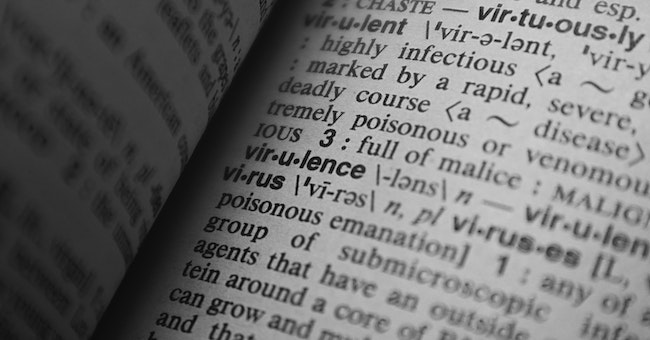Use ChatGPT to Learn Language: Comparing Chinese, English, and French

Introduction
The well-known ChatGPT is a remarkable language model developed by OpenAI. It has gained immense popularity due to its ability to generate human-like text and engage in meaningful conversations.
ChatGPT has also revolutionized language learning by providing an interactive and immersive experience. Thus, many language learners have started utilizing ChatGPT as a tool to enhance their language skills. As it can simulate conversations with users, such function empowers them to practice their target language in a natural and dynamic manner. Addtionally, the model's vast knowledge base and contextual understanding enable it to provide accurate and relevant responses, making it an ideal companion for language learners.
In this article, we are here to evaluate the effectiveness and efficiency of using ChatGPT for learning Chinese, English, and French. By comparing the experiences of learners in these three languages, we aim to determine the strengths and limitations of ChatGPT as a language learning tool. We hope that our analysis will help you make informed decisions about incorporating ChatGPT into your language learning journey.
Is ChatGPT Good for Language Learning?
What Can ChatGPT do for Language Acquisition?
ChatGPT, a variant of OpenAI's GPT (Generative Pre-trained Transformer) model specifically designed for chat-based conversations, boasts marvellous conversational abilities that make it an excellent tool for language learners. It can engage in realistic and dynamic chats, allowing learners to practice their speaking and listening skills. By interacting with ChatGPT, learners can gain confidence in their ability to communicate in the target language. To become a sophisticated user of ChatGPT and then optimize your learning experience, feel free to delve into ChatGPT Online Courses Catalog.
Additionally, ChatGPT's grammar correction feature is valuable for language learners. It can identify and correct common grammatical errors, helping learners improve their writing skills and develop a better grasp of grammar rules. This instant feedback can be highly beneficial in the language learning process.
Moreover, ChatGPT's vast knowledge base enables it to provide learners with vocabulary expansion opportunities. It can offer synonyms, definitions, and contextual examples, allowing learners to broaden their vocabulary and deepen their understanding of the language. This feature helps learners improve their overall language proficiency.
Benefits of Using ChatGPT as a Language Learning Tool
In addition to the well-recognized advantages of providing learners with conversational practice, error correction and vocabulary expansion, here we demonstrate a longer array of ChatGPT's unique strengths:
Cultural Insights: ChatGPT can provide learners with cultural insights and context. By engaging in conversations with the AI, learners can gain exposure to different cultural perspectives, idiomatic expressions, and colloquial language, which are essential for understanding and communicating in a foreign language.
Availability and Convenience: ChatGPT is accessible anytime and anywhere, making it a convenient tool for language learning. Learners can practice their language skills at their own pace, without the need for a language partner or instructor. This flexibility allows learners to fit language learning into their busy schedules.
Confidence Building: ChatGPT can help build learners' confidence in using the language. As learners interact with the AI and receive positive feedback, they can gain confidence in their language abilities, which can motivate them to continue learning and practicing.
Personalized Learning: ChatGPT can adapt to individual learners' needs and preferences. The AI can provide tailored content and exercises based on learners' proficiency levels, interests, and learning goals. This personalized approach enhances the learning experience and ensures that learners are engaged and challenged.
Overall, using ChatGPT as a language learning tool offers a range of benefits, which proves that it can be a valuable resource for language learners looking to improve their language skills in an interactive and engaging manner.
The Importance of Human Interaction and Cultural Immersion
Despite the fact that ChatGPT can be a valuable language learning tool, it is important to acknowledge its limitations. Language learning is not solely about grammar and vocabulary; it also involves human interaction and cultural immersion. AI-based approaches like ChatGPT cannot fully replicate the nuances of human conversation or provide the cultural context necessary for language learning.
Human interaction plays a crucial role in language learning as it allows learners to practice real-life communication skills, such as understanding accents, interpreting body language, and adapting to different conversational styles. Cultural immersion is equally important as it helps learners understand the cultural nuances and context behind language usage.
Therefore, while ChatGPT can provide conversational practice, grammar correction, and vocabulary expansion, it should be used as a supplementary tool alongside human interaction and cultural immersion. Combining AI-based tools with real-life conversations, language exchange programs, and cultural experiences will result in a more comprehensive and effective language learning journey.
How Do I Practice Languages with ChatGPT?
ChatGPT is a chatbot with multilingual capabilities, enabling it to provide support in a wide range of languages. At present, it has comprehensive language support for over 50 languages, encompassing English, Spanish, French, German, Chinese, Japanese, Arabic, and many others (see The list of languages supported by ChatGPT).
To practice languages with ChatGPT, you can engage in conversational interactions with the AI. The process involves typing out your messages or questions in the chat interface, and ChatGPT will respond accordingly. It's important to note that ChatGPT is designed to generate text-based responses, so the interaction is primarily through written communication.
When practicing language skills, you can start by introducing yourself or stating your language learning goals. You can then ask questions, seek clarification, or engage in discussions on various topics. ChatGPT will respond to your queries and provide conversational feedback. Additionally, you may try the following:
Role-playing exercises: Use ChatGPT as a language practice partner for role-playing exercises. Pretend you're in a specific situation, such as ordering food at a restaurant or asking for directions, and engage in a conversation with ChatGPT accordingly. This will help you simulate real-life language interactions and improve your fluency and confidence.
Writing practice: ChatGPT can be an excellent tool for improving your writing skills. Use it to write short essays, stories, or even journal entries. ChatGPT can provide feedback on your writing and help you identify areas for improvement, such as grammar, sentence structure, or coherence.
Language-specific prompts: If you're learning a specific language, try using prompts that are tailored to that language. For example, ask ChatGPT to provide you with tongue twisters, idioms, or common expressions in the language you're practicing. This will help you familiarize yourself with language-specific nuances and improve your language fluency.
Learning Experience Comparison---Learning Chinese, English and French with ChatGPT
Learning Chinese with ChatGPT
Learning Chinese presents unique characteristics and challenges compared to other languages. One of the main challenges is the writing system, which uses characters instead of an alphabet. Chinese characters are complex and require memorization of thousands of characters to achieve proficiency. Additionally, Chinese is a tonal language, meaning that the meaning of a word can change based on the tone used. This aspect adds another layer of difficulty for learners. To utilize in-depth tutorials to overcome these obstacles, you may explore Chinese Online Courses Catalog.
ChatGPT can be a valuable tool for learning Chinese. It can assist learners with character recognition by providing instant translations and explanations of characters. Learners can input a character, and ChatGPT can provide the pronunciation, meaning, and usage examples. This feature helps learners build their character recognition skills.
Regarding pronunciation, ChatGPT can provide audio samples and pronunciation guides for Chinese words and phrases. Learners can practice their pronunciation by listening to the correct pronunciation and comparing it to their own. In terms of sentence structure, ChatGPT can effectively offer grammar explanations and sentence examples. Learners can input sentences they want to construct, and ChatGPT can provide feedback and suggestions for improvement. This feature helps learners understand the correct sentence structure and improve their overall writing and speaking skills.
Learning English with ChatGPT
As a veritable Lingua Franca, English is one of the most widely spoken languages globally, and there is a high demand for learning it. English proficiency is often required for academic, professional, and personal reasons. However, learning English can be challenging due to its complex grammar rules, extensive vocabulary, and various regional accents and dialects.
But fear not. ChatGPT is definitely a silver bullet for improving English skills. It can assist learners with grammar by providing explanations, examples, and corrections. Learners can input sentences or specific grammar questions, and ChatGPT can offer suggestions and explanations to help learners understand and apply the correct grammar rules.
In terms of vocabulary, ChatGPT can provide synonyms, antonyms, and usage examples for words. Learners can expand their vocabulary by exploring different word choices and learning how to use them in context. For fluency, ChatGPT can engage in conversation and provide real-time feedback. Learners can practice their speaking and writing skills by interacting with ChatGPT, receiving instant responses, and refining their fluency over time.
Learning French with ChatGPT
Learning French presents its own set of nuances and complexities. One of the major challenges is the pronunciation, as French has many silent letters and specific sounds that may be unfamiliar to non-native speakers. Additionally, French has a complex system of verb conjugation, with different verb forms for each subject pronoun and tense. The use of idiomatic expressions and the gender agreement of nouns and adjectives also add to the complexity of learning French.
With ChatGPT's prompt aid, you can free your worries about verb conjugation by providing conjugation tables and explanations. You can input a verb, and ChatGPT can generate the conjugated forms for different tenses and pronouns, helping you practice and understand the verb forms.
Regarding idiomatic expressions, ChatGPT can provide translations, explanations, and usage examples. You can input an expression, and ChatGPT can offer its meaning and provide context for its usage. This feature helps learners grasp the nuances of French expressions and use them appropriately. For pronunciation, ChatGPT can provide audio samples and pronunciation guides for French words and phrases. You can listen to the correct pronunciation and practice your own pronunciation accordingly, improving your overall speaking skills.
It is noteworthy that learning French via ChatGPT and by traditional tutorials have their own advantages. ChatGPT provides continuous conversational practice, real-time grammar and vocabulary support, and accessibility. Traditional tutorials, such as the ones aggregated in our French Online Courses Catalog, offer cultural immersion, personalized guidance, and comprehensive learning experiences.
Conclusion
In a nutshell, ChatGPT proves to be a powerful language learning tool, offering benefits such as conversational practice, grammar correction, and vocabulary expansion. While it cannot completely replace human interaction and cultural immersion, it complements traditional tutorials and provides additional opportunities for language practice and improvement.
When comparing the learning experiences of Chinese, English, and French with ChatGPT, we find that the AI model can assist learners in unique ways. For learning Chinese, ChatGPT aids with character recognition, pronunciation, and sentence structure. In the case of English, it helps learners improve grammar, vocabulary, and fluency. When it comes to French, ChatGPT supports learners with verb conjugation, idiomatic expressions, and pronunciation.
While ChatGPT offers numerous benefits, it should be noted that traditional tutorials and real-life communication offer advantages such as cultural immersion and personalized guidance. Therefore, a combined approach that incorporates both ChatGPT and traditional tutorials can lead to a comprehensive and effective language learning experience.





